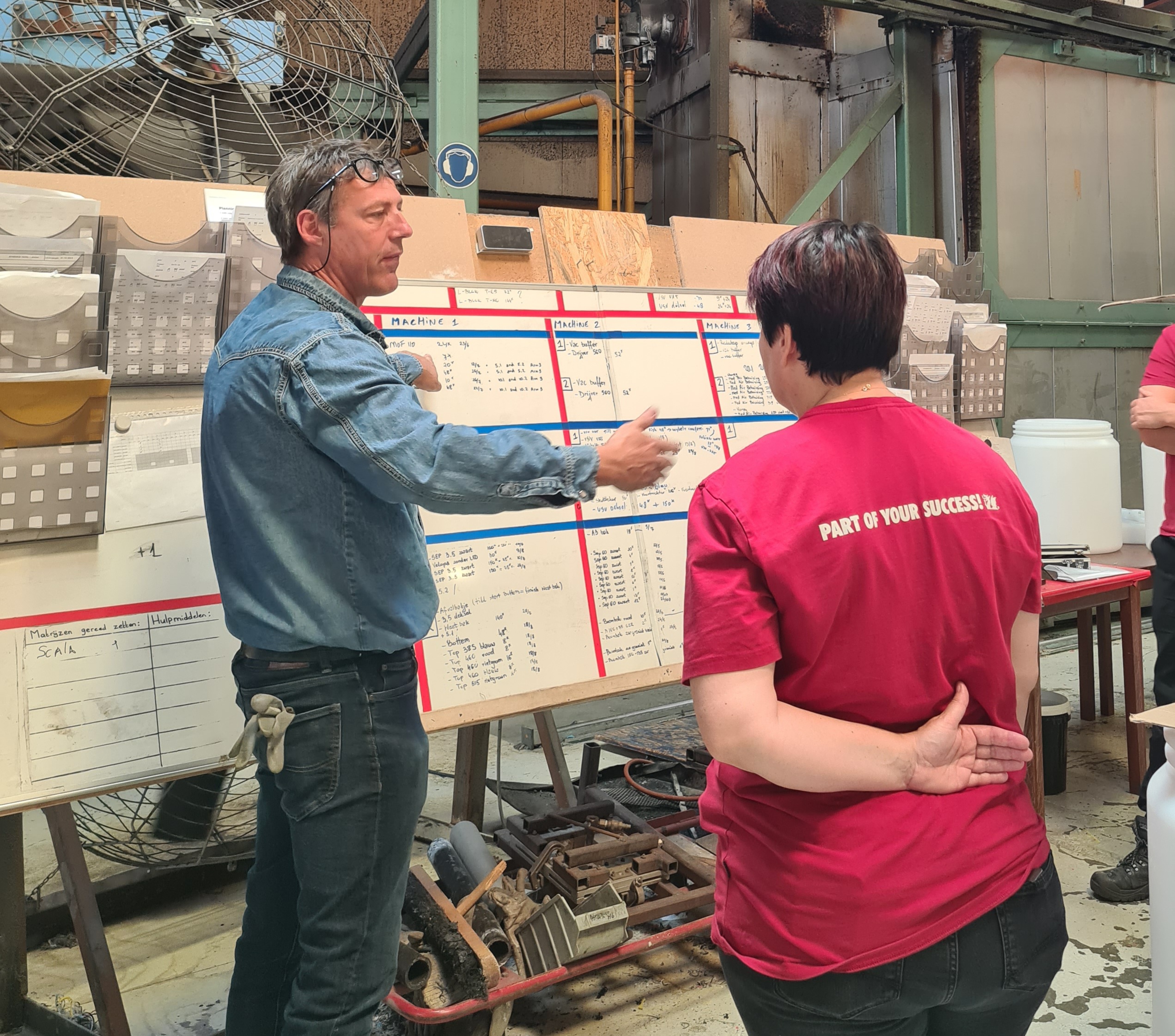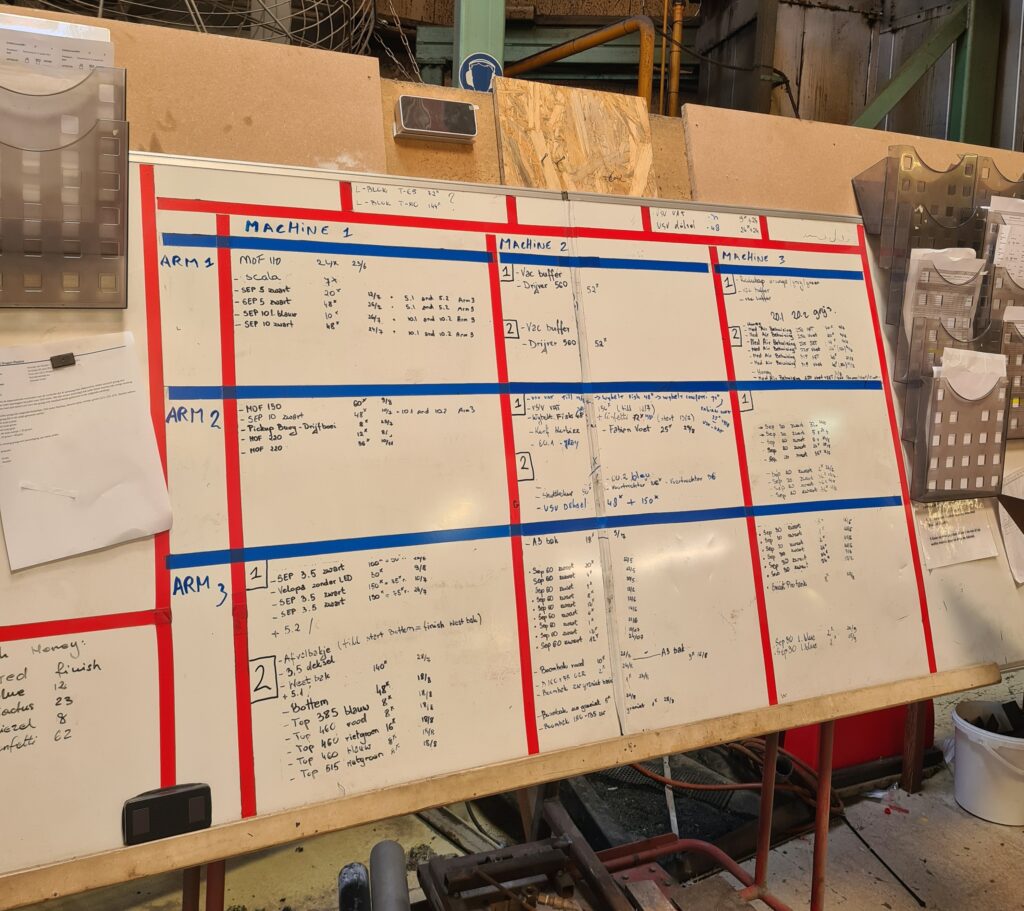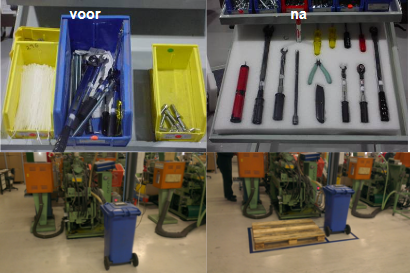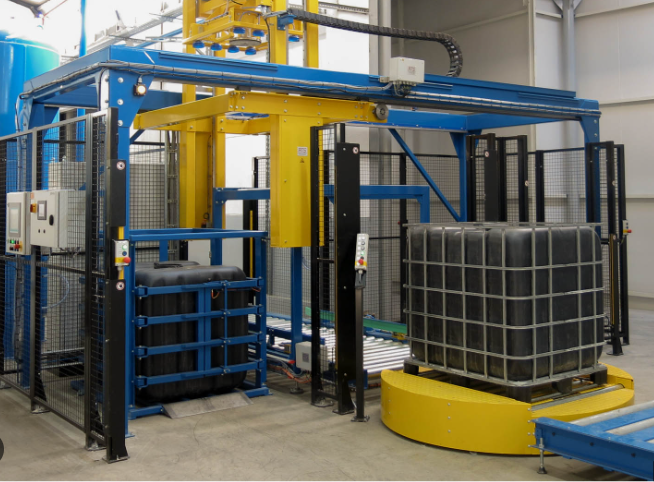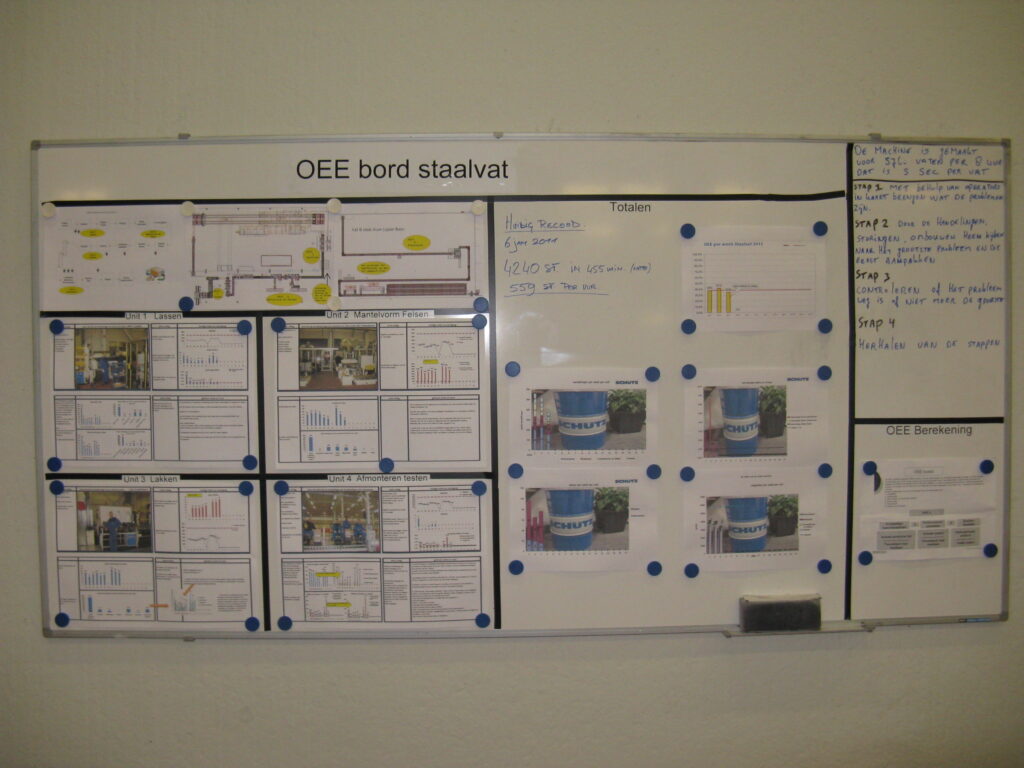Structure in the workplace in 5 steps
Implementing 5S on the shop floor has the biggest goal of increasing productivity and effectiveness by creating and maintaining the workplace.
The search for tools and resources is removed, and a visual place is created for everything. Employee productivity increases, more production is possible because the right tools are within reach. In a clean and tidy environment, it is easier to think clearly and sharply. By implementing 5S method, we can offer production staff peace and structure on the shop floor.
The 5S system consists of 5 phases:
Seiri - Separating - Determining what is needed and what can go away.
Seiton - Arrange - Tools logical and easy for use arrange.
Seiso - Cleaning - Clean up the environment and visualise the workplace.
Seiketsu - Standardise - Defining the working method for the workplace.
Shitsuke - Hold firm - Making sure everyone sticks to the agreements.
Building blocks of a structured workplace
Implementing 5S delivers an orderly and structured workplace. But when it comes down to it, it delivers much more. For instance, lines can be applied on the shop floor, shadow boards hung, 5S labels added, safety markings created, and 5S audit boards installed. The work environment actually gets a total upgrade.
Read in "Success Stories" how this 5S was implemented at Dragon Plastics.
Improve machine effectiveness
Overall Equipment Effectiveness provides insight into where the machine's losses are and thus shows the potential for improvement. OEE is basically a tool by and for the operators at the machine. To identify losses here and then eliminate them. OEE is calculated on the basis of 3 categories:
- Availability
- Performance
- Quality
Ownership
The OEE technique reveals where machine losses are and gives operators ownership of their machine. All this to improve machine effectiveness. Operators are trained to take more responsibility over rejects or losses and learn about the machine technically and process-wise, leading to a desire to produce as effectively as possible.
Machine reliability
Increasing machine reliability will eliminate the source causes of all kinds of losses. Thus, unplanned breakdowns will give way to planned maintenance. Thus, production will not be at a standstill unexpectedly.
With the help of VSM you can visualize a process in the organization in a smart and relatively simple way. This mapping of the value stream can be done on a piece of paper and provides insight into the steps per product in the production process.
The purpose of the improvements is to develop employees so that they contribute ideas about the process. The losses from the value stream are addressed in this way, so that only value-adding activities remain. We will do this together by setting a common standard, providing feedback on daily work, and maintaining a high degree of transparency. It encourages employees to become action-oriented and keep focus on the process. Here we can discuss the practice and later set a joint goal.
Single Minute Exchange of Dies is a method from the lean manufacturing philosophy. The SMED method is intended for a fast and efficient way of converting a production process to another product. Changeover is the set of activities required to switch from a current production order to a new production order.
This used to take hours and by mapping the work and improving it, the aim was to work in minutes. Different methods they use in this, my favourite is the spaghetti joke to show muda (waste).
Within Lean, they originally talk about the 7 wastes
- Transportation; transportation refers to the movement of materials from one location to another.
- Stock; stock costs you money. Every product in storage has a cost.
- Motion
- Waiting
- Overproduction
- Overprocessing
- Defects
